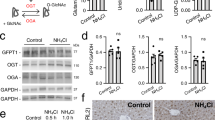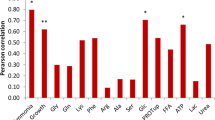Abstract
THE synthesis of urea as the main end-product in protein metabolism in the mammalian body has been the subject of investigation since the early days of biochemical studies. The discovery by Kossel and Dakin of arginase, the enzyme splitting arginine into urea and ornithine, appeared to provide a solution for the problem, the more so since the enzyme was found to be abundant in mammalian tissue. The insufficient endogenous and exogenous supply of arginine, however, presented a difficulty since the quantities of arginine available for urea production were found to represent only a small fraction of what was necessary to account for the comparatively large excretion of urea in the urine. So early workers supported the view that urea could not possibly be produced by hydrolysis of arginine only, but that the bulk of urea was oxidatively synthesized from ammonia or ammonia sources such as amino acids. The role of arginase was thus considered of minor importance until Krebs and Henseleit1 published their attractive theory in 1932, according to which the ammonia was used in the synthesis of arginine from ornithine and citrulline, followed by hydrolysis of arginine to urea and ornithine through the action of arginase. In this way a continuous resynthesis of arginine was to take place in the mammalian liver for which ornithine and citrulline acted as catalysts and urea was eventually obtained by the action of arginase on arginine.
This is a preview of subscription content, access via your institution
Access options
Subscribe to this journal
Receive 51 print issues and online access
$199.00 per year
only $3.90 per issue
Buy this article
- Purchase on Springer Link
- Instant access to full article PDF
Prices may be subject to local taxes which are calculated during checkout
Similar content being viewed by others
References
Krebs, H. A., and Henseleit, K., Hoppe-Seyl. Z., 210, 33 (1932).
London, E. S., and Alexandry, A. K., Hoppe-Seyl. Z., 246, 106 (1937).
Neber, M., Hoppe-Seyl. Z., 234, 83 (1935).
Leuthardt, F., Hoppe-Seyl. Z., 212, 238 (1938).
Trowell, O. A., J. Physiol., 100, 432 (1942).
Leuthardt, F., and Glasson, B., Helv. Chim. Acta, 25, 630 (1942).
Bach, S. J., Biochem. J., 33, 1833 (1939).
Schoenheimer, R., et al., J. Biol. Chem., 127, 319, 342 (1939).
Author information
Authors and Affiliations
Rights and permissions
About this article
Cite this article
BACH, S., WILLIAMSON, S. Formation of Urea in the Mammalian Body without Participation of Arginase. Nature 150, 575–577 (1942). https://doi.org/10.1038/150575b0
Issue Date:
DOI: https://doi.org/10.1038/150575b0
This article is cited by
-
Urea Synthesis in Mammalian Liver
Nature (1943)
Comments
By submitting a comment you agree to abide by our Terms and Community Guidelines. If you find something abusive or that does not comply with our terms or guidelines please flag it as inappropriate.



